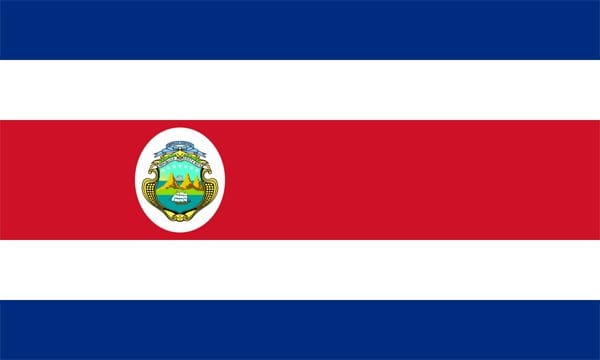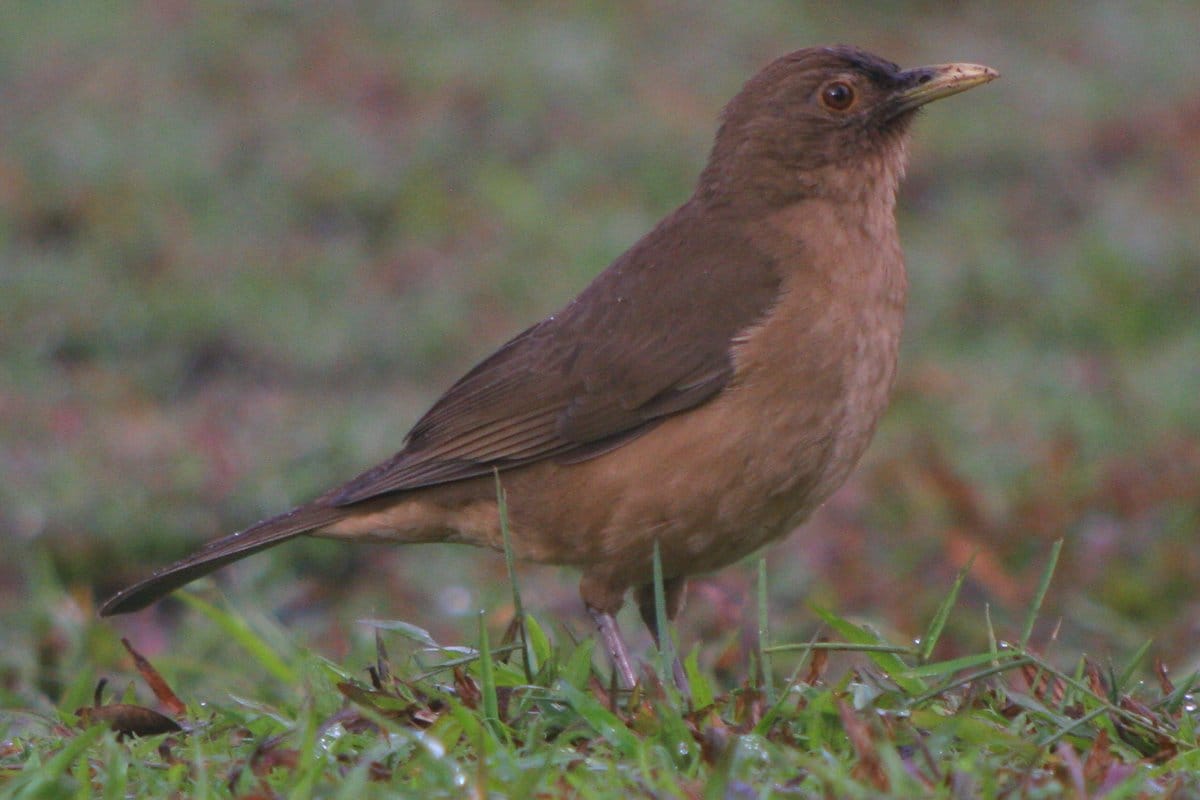The national bird of Costa Rica is the Clay-colored Thrush, perhaps my favorite decision for a national bird of any country’s. The Yigüirro, as it is called in Costa Rica, was declared Costa Rica’s national bird on 3 January 1977. But why choose the Yigüirro at all in a country teeming with iconic and flashy birds like macaws, motmots, toucans, and tanagers? This question is especially relevant considering that the bird is so bland that its scientific name is Turdus grayi, which, translated by someone who doesn’t speak Latin, means Gray Thrush.*
According to the website Costa Rica:
The clay-colored thrush was chosen as the national bird for several reasons. Due to its wide range and tendency to live close to humans, it is well known and therefore mentioned in many of Costa Rica’s folk songs, short stories and novels. The males are also cherished for their exquisite song; during mating season, they serenade potential mates with an unmistakable tune.
Common, widespread, confiding, and given to beautiful song – it is surprising that more countries haven’t chosen the Clay-colored Thrush as their national bird! And how beautiful is their song? Take a listen here. The Yigüirro sounds to me like an American Robin after voice lessons, though I do think that going so far as to call their song “exquisite” is a bit too much.
Clay-colored Thrush as their national bird! And how beautiful is their song? Take a listen here. The Yigüirro sounds to me like an American Robin after voice lessons, though I do think that going so far as to call their song “exquisite” is a bit too much.
The Clay-colored Thrush is the perfect example of a bird that has achieved national bird status not by being showy, huge, ferocious, or any other superlative. The Yigüirro is, at the risk of anthropomorphizing, simply a nice bird with a good personality. People, especially Costa Ricans, seem to appreciate that.
*As we learned in the comments the bird was actually named for “Mr. G. R. Gray, a young ornithologist” by Prince Bonaparte.
…
Want to see all of the national bird posts on 10,000 Birds? Click on our National Birds page!
………












Turdus grayi = Gray Thrush is a very, very rough translation! 😉 🙂
Not ‘grey thrush’, ‘Gray’s thrush’, as in named after someone called Gray.
@Christopher Taylor: I have seen it called Gray’s Thrush, Gray Thrush, and Gray Robin. Until someone gives me a reference showing who “Gray” is I will stick with the idea that it was named for its color, odd as it may be for a mostly brown bird. Not that I doubt it is named for a person but eve if it is it seems that some people have taken to calling the bird after the color (or at least some people have cut-and pasted that from account to account).
Perhaps if you weren’t lazy, you could take 2 minutes to find the answer on the web. Which is the amount of time it took to find the original article:
32. Turdus Graty, Nob. T. olivaceo-fuscus, subtus flavo-cinnamomeus, gula tantum vix fuscescenti striata: tectricibus alarum inferioribus remigumque margine interno aurantio-cinnamomeis, remigum primo sextam aquante, 4to et 5to omnium longissimis, tertiam et sextam vix superantibus; cauda aequali, duo pollices ultra alas pratensa; rectricibus submucronatis.
Long. tot. 8″; rostr. 1″; al. 4″ 3″‘; caud. 3″ 3′”; tars. 1″ 1′”.
A typical species: which I have much pleasure in dedicating to Mr. G. R. Gray, a young ornithologist.
1837 Proceedings of the Zoological Society of London, page 118
Next time do some research before you make up things!
By the way, that is grayi not graty because this was rushed as I don’t need to be doing your research..
Well, you could always try looking it up: the original description is freely available on BHL (http://biodiversitylibrary.org/item/96163#page/290/mode/1up). It’s describer, Prince Bonaparte (a close relative of the other Bonaparte), refers to it as, “A typical species: which I have much pleasure in dedicating to Mr. G. R. Gray, a young ornithologist”.
Besides, had it been named for its colour it would have been Turdus griseus.
@Christopher and bird historian: I had done a google search and not come up with that information. And of course the latin for gray would not be “grayi.” Thanks for the info!
@bird historian: We try to foster civility on this site. I’m sorry that my admittedly poor joke about the translation was not popular with you. But I’m even more sorry that you feel the need to act like such a jerk in our comments section.
Why this bird was chosen over quetzals, toucans, etc. to be the national bird for Costa Rica probably gets asked by visiting birders more often than any other bird related inquiry. Heck, we birders who live in the land of gallo pinto and Rufous-collared Sparrows also ask this question from time to time. Thanks for giving an answer! I always figured it had something to do with the fact that you cant possibly miss them (especially nowadays when they belt out that robinish song at 4 am each morning). Yeah, nice, familiar bird.
On a side note, interesting to see that some peoples buttons can get pushed by joking around about bird descriptions.
i dont understand why this bird is the national bird why didn’t choose something that looks better.
this web site s cool im going to costa rica over the summer just for fun
Problem is that it not gray. The color…
On the reasons to pick the yiguirro as national bird, there is something to add. Being costaricans mostly farmers or recent descendants of farmers, the bird has a special and close relation to us: breeding season starts with the first rains, so the bird start singing in the weeks just previous to the begining of the rainy season which is the time to prepare the fields for the year’s crop. We say the birds are announcing or calling the rain, and yes, we are waken up by their song, since they vocalize from 4 or 4h30 in the morning.
Costa Rica, mi tierra, would not be the same without the fabulous singing of the Yigüirro. There are many other, even more colorful and “exotic,” birds in this beautiful land; but this bird capture our souls with its exquisite lyrics which keep reminding us that we are in the land of pura vida. Beauty does not only go through our souls via our sight, the Yigüirro’s songs directly penetrate and divinely indulge all of our senses…